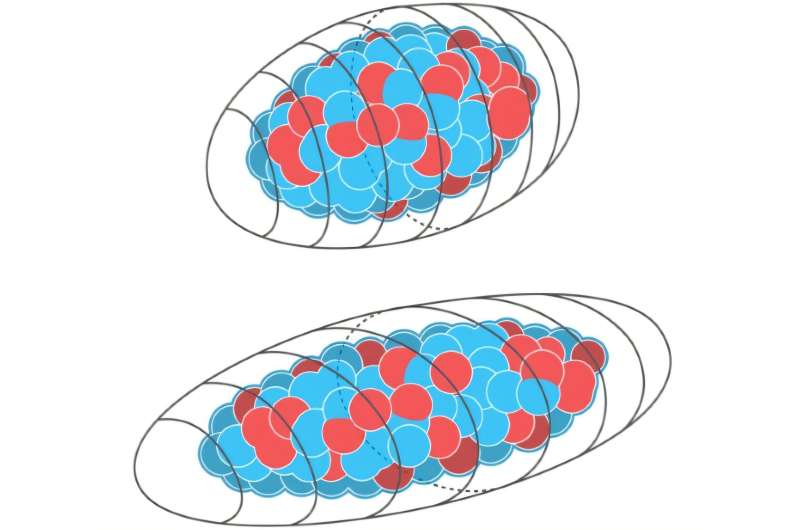A recent study conducted by nuclear physicists at RIKEN has challenged long-standing assumptions regarding the shape of heavy atomic nuclei. Published in The European Physical Journal A on November 13, 2025, the research indicates that many of these nuclei are shaped more like elongated almonds than the previously believed rugby ball configuration.
For decades, the scientific consensus held that atomic nuclei were predominantly spherical. This notion gained traction in the 1950s when physicists Aage Bohr and Ben Mottelson proposed a model suggesting that heavy nuclei are elongated in one direction. Aage Bohr, following in the footsteps of his father, the esteemed Niels Bohr, who won the 1922 Nobel Prize for his atomic model, was awarded the 1975 Nobel Prize alongside Mottelson for this significant discovery.
Despite this historical context, doubts lingered for Takaharu Otsuka, a visiting scientist at the RIKEN Nishina Center for Accelerator-Based Science. He questioned the assumption that nuclei should take on a rugby ball shape. Otsuka wondered why they would not adopt a more varied, almond-like shape, which he believed would be a more natural configuration. “When Aage Bohr’s model was proposed, it produced some simple calculations, but they appeared overly simplistic to me,” he noted. His skepticism about the rugby ball configuration had been growing for years, leading him to propose at various conferences that almond-shaped nuclei might be more common.
Otsuka faced considerable skepticism from the nuclear physics community when he voiced these ideas. Nonetheless, his theoretical study, conducted with colleagues, ultimately validated his suspicions. The findings indicate that most heavy nuclei are actually triaxially deformed, resembling almonds rather than being biaxially shaped like rugby balls.
“This work represents a major shift in the fundamental description of nuclear structure that was entrenched for nearly 70 years,” Otsuka stated. The research’s implications extend beyond theoretical discussions; they suggest that nuclei can rotate about two axes rather than just one, altering the understanding of their dynamics.
Access to the Fugaku supercomputer, one of the most powerful in the world, was crucial for Otsuka and his team in conducting this complex analysis. The ability to simulate various nuclear shapes and their properties provided the necessary computational power to challenge the previous model effectively.
This groundbreaking research not only reshapes the theoretical landscape of nuclear physics but also has potential ramifications for the search for new superheavy nuclei that exceed the mass of currently known nuclei. The findings underscore the importance of revisiting established scientific models, as they can lead to significant advancements in understanding atomic structures.
As the field of nuclear physics continues to evolve, Otsuka’s study serves as a reminder of the importance of questioning established norms and pursuing innovative research paths.


































































